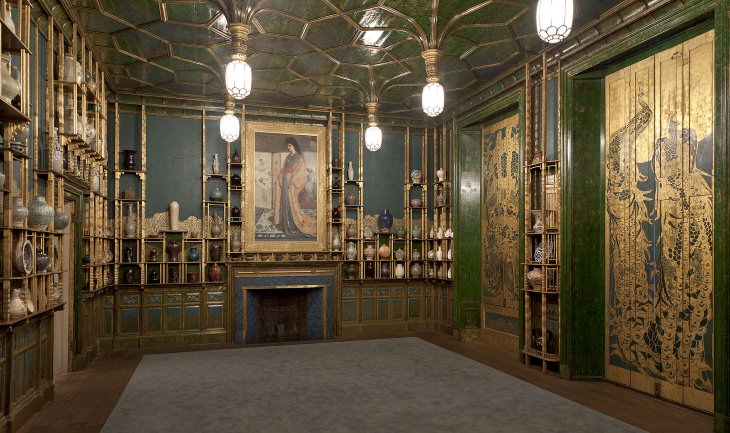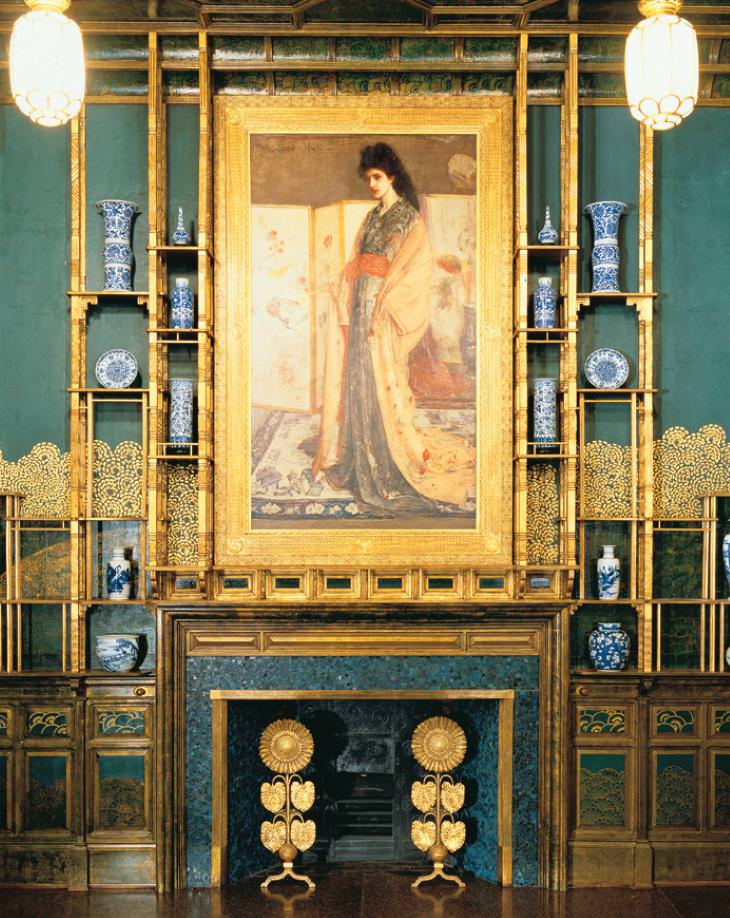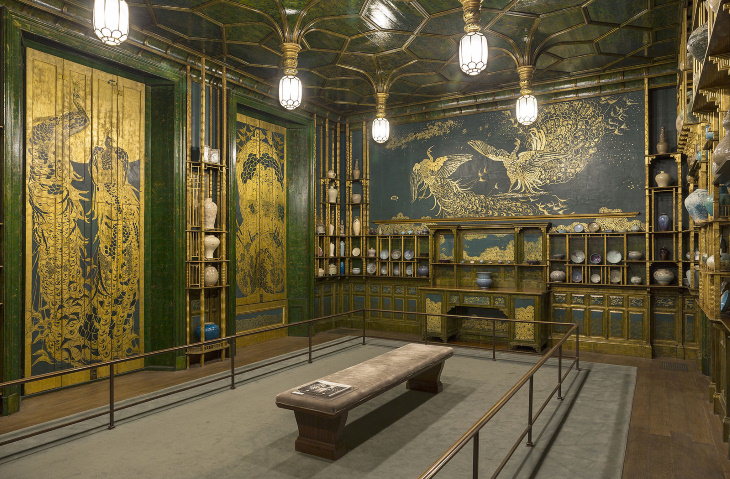James McNeill Whistler is most famous for the depiction of his mother, which became one of the most recognized American paintings ever, namely Arrangement in gray and black No. 1 (1871), commonly known as Whistler’s Mother. In this article, however, we will focus on the famous American painter’s accidental and somewhat scandalous masterpiece - Harmony in Blue and Gold: The Peacock Room.
Today, this interior art piece is considered to be one of the greatest aesthetic interior decorations ever created and a prime example of the Anglo-Japanese style in interior design history. But at the time of its creation in 1877, the room became the subject of much dispute and outright animosity. Let's examine the strange history of this masterpiece and admire its beauty together.
The Creation of the Peacock Room
Whistler was not supposed to design the Peacock Room. Originally, the room was conceptualized as a dining room in the London mansion owned by the one Frederick Richards Leyland, which was designed to hold the British magnate’s large collection of Chinese blue and white porcelain from the Kangxi era.
A closer view at The Princess from the Land of Porcelain (1863-1865)
Leyland hired Thomas Jeckyll for the job, a British architect experienced in the Anglo-Japanese style, a design movement that inspired by Oriental art that incorporated Japanese motifs and interior decoration elements into English art, as the name suggests. One of the central pieces of the dining room would be a painting by James McNeill Whistler depicting a beautiful Caucasian woman wearing a kimono, standing amidst Asian objects titled The Princess from the Land of Porcelain.
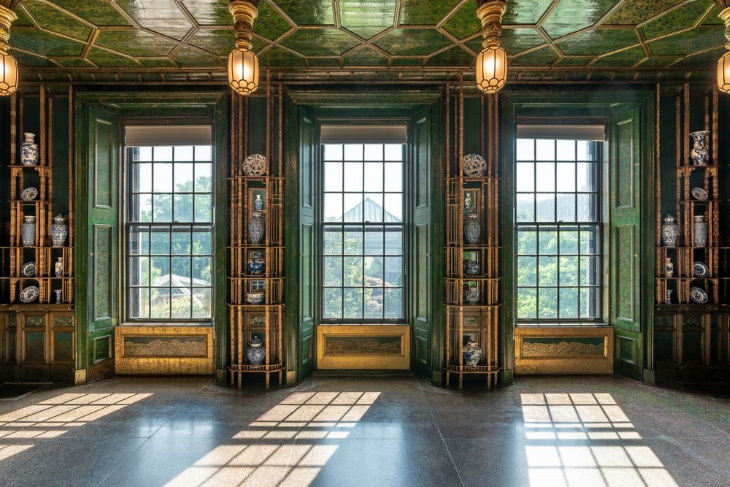
While the American artist was working on the entrance hall of Leyland’s home, Jeckyll nearly finished the dining room but was forced to abandon the project due to illness, and Whistler volunteered to finish the room instead. Whistler was authorized to complete just a few minor alterations - to retouch the leather hangings with yellow paint and embellish the cornices and wainscoting with a golden wave pattern - but he got carried away with his work.

In the artist’s own words, “Well, you know, I just painted on. I went on ―without design or sketch― it grew as I painted. And toward the end, I reached such a point of perfection ―putting in every touch with such freedom― that when I came round to the corner where I started, why, I had to paint part of it over again, as the difference would have been too marked. And the harmony in blue and gold developing, you know, I forgot everything in my joy in it."
As a result, the dining room was completely transformed, with the bright gold and yellow elements creating a contrast against the green and blue base. When Leyland returned from a trip and saw the Peacock Room, he became furious, as he thought that Whistler’s improvements made the room look gaudy and over-the-top.
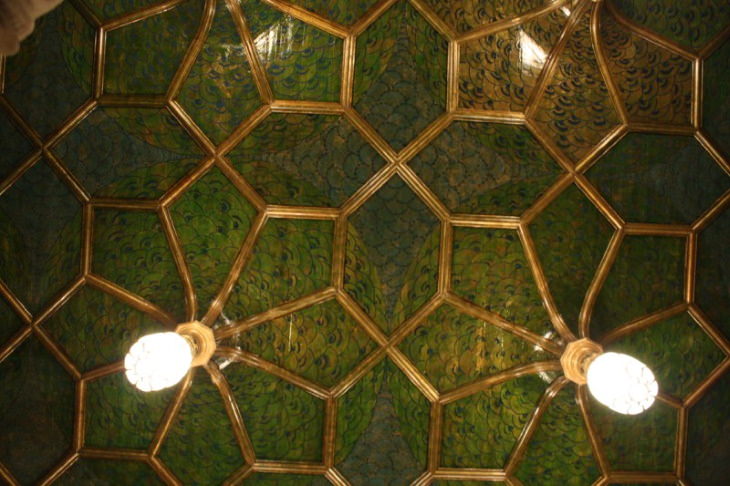
The two quarreled intensely: Leyland refused to pay for the room, the patronage between the artist and the magnate ceased to exist. At one point, Whistler sneaked into Leyland’s home and made another “improvement” - he painted two fighting peacocks which were supposed to represent the artist and his patron, which he named Art and Money: or, The Story of the Room.
Ultimately, The Peacock Room grew to be the reason for lifelong animosity between the two men, with Whistler even reportedly saying to Leyland at one point, "Ah, I have made you famous. My work will live when you are forgotten. Still, perchance, in the dim ages to come, you will be remembered as the proprietor of the Peacock Room."
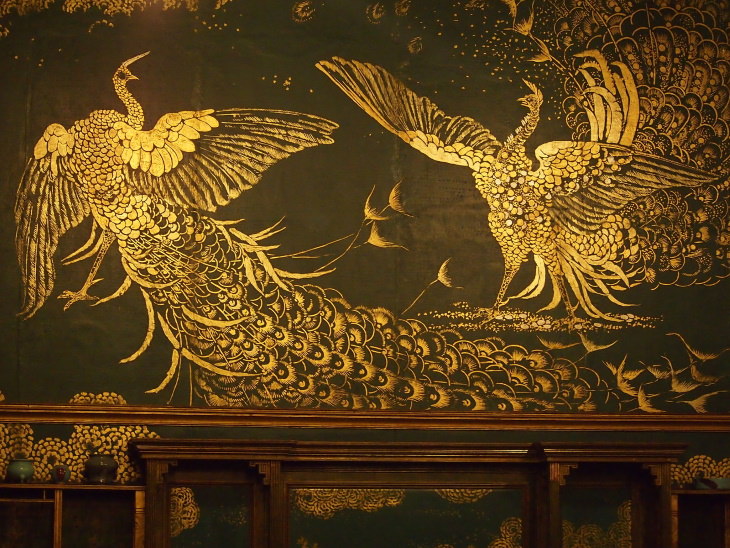
The Peacock Room’s Fate
Whistler was ultimately right, and The Peacock Room did become one of the artist’s greatest masterpieces and one of the most magnificent interior decorations in history. Leyland, too, must’ve recognized the worth of the room, as he hadn’t changed a thing in it, although he never recognized it publically.
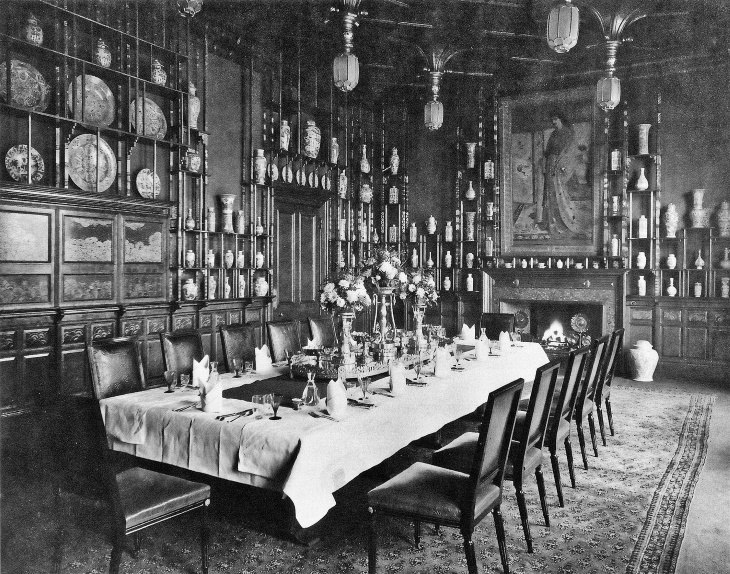
The Peacock Room in its original location (1890)
Still, the price the creators of the room had to pay for their masterpiece was greater they could ever expect. A few days after seeing the finished design of the room, the initial architect, Thomas Jeckyll, has gone insane found in his studio which was completely covered in gold leaf. He had never recovered and died three years later. The termination of the relationship with his greatest sponsor also led Whistler to bankruptcy in 1879.
After Leyland’s death, American industrialist and art collector Charles Lang Freer bought the entire Peacock Room in 1904 and transported it piece by piece across the Atlantic to be re-installed in his Detroit mansion. Freer used the room as a display of his own pottery collection. After Freer’s death in 1919, the room had become part of the Freer Gallery of Art at the Smithsonian in Washington, D.C., where it can be found and seen to this day.

